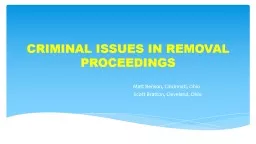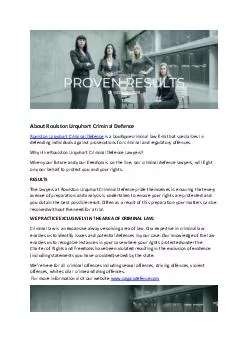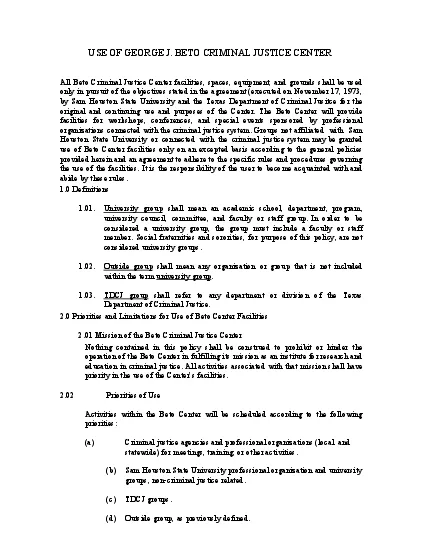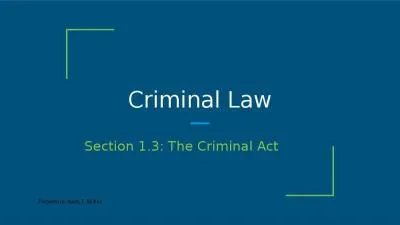PPT-CRIMINAL ISSUES IN REMOVAL PROCEEDINGS
Author : sherrill-nordquist | Published Date : 2017-07-27
Matt Benson Cincinnati Ohio Scott Bratton Cleveland Ohio INA 101a 48 A formal judgment of guilt OR If adjudication of guilt is withheld and
Presentation Embed Code
Download Presentation
Download Presentation The PPT/PDF document "CRIMINAL ISSUES IN REMOVAL PROCEEDINGS" is the property of its rightful owner. Permission is granted to download and print the materials on this website for personal, non-commercial use only, and to display it on your personal computer provided you do not modify the materials and that you retain all copyright notices contained in the materials. By downloading content from our website, you accept the terms of this agreement.
CRIMINAL ISSUES IN REMOVAL PROCEEDINGS: Transcript
Download Rules Of Document
"CRIMINAL ISSUES IN REMOVAL PROCEEDINGS"The content belongs to its owner. You may download and print it for personal use, without modification, and keep all copyright notices. By downloading, you agree to these terms.
Related Documents














